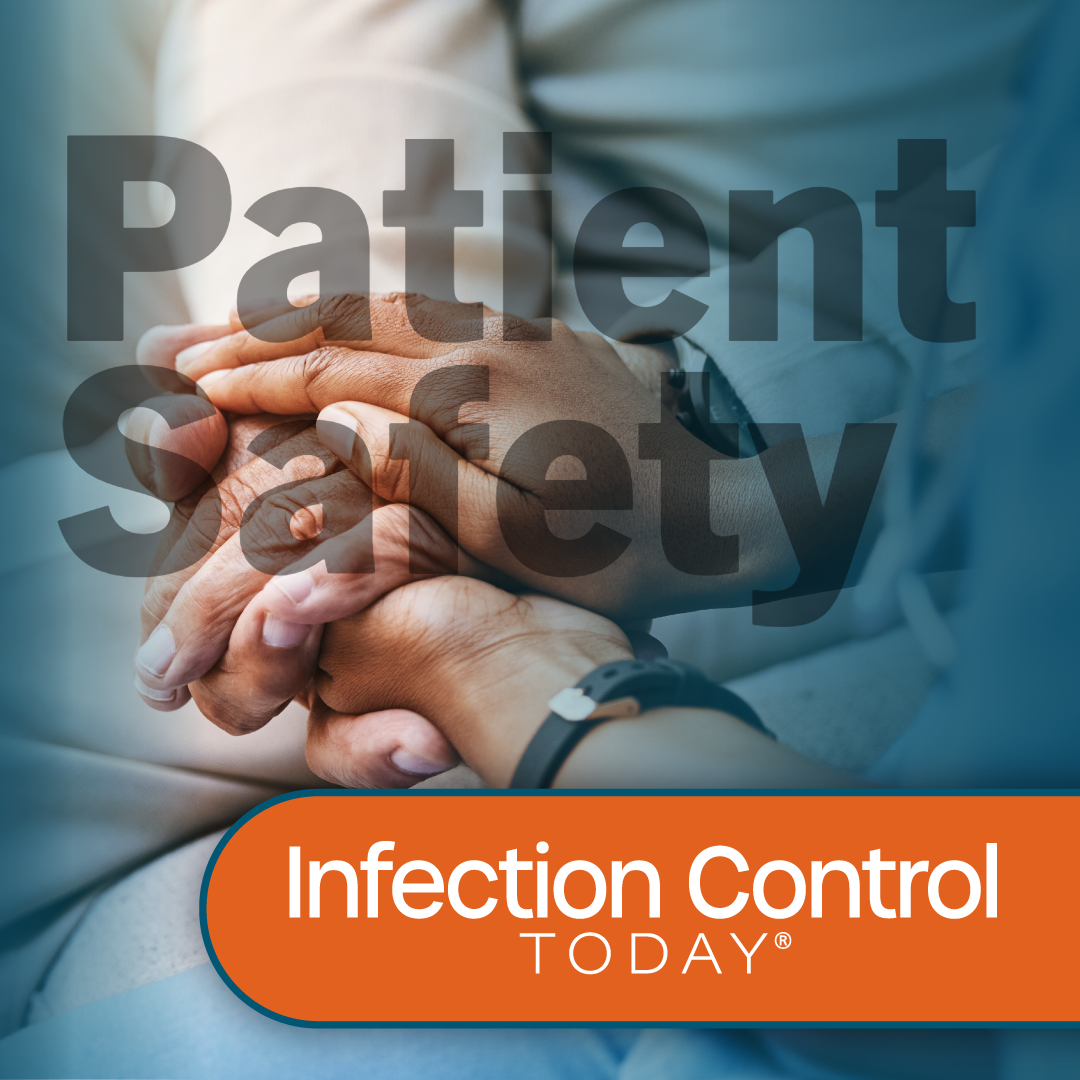The Role of Environmental Hygiene in Preventing Antimicrobial Resistance
Uncover the pivotal role of environmental hygiene in thwarting antimicrobial resistance (AMR) for infection prevention teams. Learn how rigorous cleaning protocols and advanced technologies enhance patient safety and combat AMR.
Infection prevention personnel fight against the enemy, infections.
(Adobe Stock 570548731 by giorgi)

One of the foundations of environmental hygiene within health care facilities is the rigorous implementation of surface cleaning procedures, disinfection protocols, and hand hygiene practices. Surfaces with high-touch frequencies, such as doorknobs, bed rails, and medical equipment, can harbor pathogenic microorganisms. Consistent adherence to hand hygiene practices and meticulous disinfection procedures utilizing efficacious antimicrobial agents is paramount in preventing the survival and transmission of resilient microbial strains. Environmental hygiene’s role in mitigating microbial infections extends beyond safeguarding patient well-being; it also encompasses providing a secure healing environment that facilitates the effective execution of medical personnel’s duties. Recognizing the challenges associated with addressing antimicrobial resistance is crucial for health care leaders.
The environmental services department in hospitals has undergone a transformative paradigm shift toward a scientifically grounded approach to cleaning and disinfection. This transformation is specifically designed to tackle the challenges presented by emerging microbial strains, which contribute to the incidence of nosocomial infections. Central to this progression is the integration of state-of-the-art technology to enhance the overall efficacy of cleaning processes and the deactivation of potentially hazardous pathogens. Advanced tools, including UV lights, electrostatic sprayer devices, and sporicidal disinfectants, can help minimize bioburden within the health care environment.
Antimicrobial resistance (AMR) poses a significant threat to global public health, leading to increased morbidity, mortality, and health care costs. In the battle against AMR, environmental hygiene emerges as a crucial player, particularly within hospital settings where the risk of infections is heightened. According to the World Health Organization (WHO), “bacterial AMR was directly responsible for 1.27 million global deaths in 2019 and contributed to 4.95 million deaths.” In addition, WHO noted, “the World Bank estimates that AMR could result in $1 trillion additional health care costs by 2050.”1
Primary Types of Microorganisms
AMR arises when bacteria, viruses, fungi, and parasites resist antimicrobial medicines’ effects. This resistance renders antibiotics and other antimicrobial drugs ineffective, making infections challenging or impossible to treat. Consequently, there is an elevated risk of disease transmission, severe illness, disability, and mortality.
WHO has declared AMR a global health crisis, emphasizing the urgent need for comprehensive strategies to curb its escalation.1 Mitigating infections through thorough decontamination of environmental surfaces reduces the need to resort to using antibiotics and other antimicrobials against health care–associated infections. Diminishing dependence on antimicrobials assumes paramount significance in the worldwide endeavor to tackle the escalating issue of antimicrobial resistance—a burgeoning public health concern.2 According to an article published in the American Journal of Infection Control summarizing a United Nations General Assembly event, “Studies have shown that IPC [infection prevention and control] interventions can achieve a significant reduction (35%-70%) in the rates of health care‑associated infections, irrespective of the income level of a country.”2
Infection Control Today's Monthly Topic: Patient Safety

AMR transcends the realm of medicines, encompassing antimicrobial disinfectants as well. Bacterial endospores frequently exhibit robust resistance to disinfectants by adeptly evading penetration. Disinfectants’ efficacy is contingent upon various factors, including the duration of contact with microorganisms, biocide concentrations, and considerations of cellular impermeability or biofilm formation.
Hospital Environments as Breeding Grounds
Hospitals pose a distinctive challenge to combating AMR. The constant influx of patients, a variety of pathogens, the widespread use of antibiotics, and the incorrect use of disinfectants can create an environment conducive to developing and spreading drug-resistant microbes.
During convalescence in health care environments, patients excrete microorganisms, which are deposited onto various surfaces. Subsequently, health care personnel or visitors may come into contact with these contaminated surfaces. Upon transmission to new hosts, the pathogens can instigate infections, prompting the prescription of antimicrobials tailored to the specific infectious agent. Consequently, intrinsic and acquired resistance mechanisms emerge as consequential by-products of specific therapeutic interventions, particularly in cases involving bacterial infections. This cyclic phenomenon perpetuates the ongoing evolution and escalation of antimicrobial resistance.
Hand Hygiene Practices
Health care professionals, as potential carriers of resistant microbes, may unintentionally contribute to the dissemination of AMR. Health care personnel play a crucial role in minimizing cross‑contamination between patients by implementing measures to reduce or eliminate the risk of pathogenic transfer. This involves selecting appropriate handwashing soaps and alcohol-based hand rubs (ABHRs) designed to reduce or eliminate colony counts on the hands and impede the transfer of resistant microbes from surfaces and infected patients. These preventive measures are essential in avoiding new infections and consequently mitigating the need for additional antimicrobial treatments.
An ABHR with a minimum alcohol content of 60% has proved effective in reducing bacterial counts on the hands. However, various factors can influence its efficacy, including contact time, application volume, and amount of soil on the hands. Although alcohol-based hand rubs may lack continuous antimicrobial action due to their volatility, it remains crucial to consistently use an ABHR before undertaking critical patient care tasks.
Moreover, handwashing is highly effective in eliminating a significant portion of transient microorganisms. Although washing the hands with soap and water may not actively exterminate microorganisms, it diminishes the quantity of pathogens on the hands. Through proper drainage (and preventing back splashing), pathogens can be efficiently removed from the hands and directed into sewage systems, where the laws of thermodynamics govern their fate.
Caution is recommended when using hand hygiene products without considering their content, particularly considering growing concerns about inconclusive research related to AMR and the prolonged usage of such products.3
Cleaning/Disinfection Chemistries
In the ongoing fight against AMR, the importance of using the right cleaners and disinfectants cannot be emphasized enough. It is crucial to exercise discernment when deploying antimicrobial agents. The thoughtful selection of suitable cleaning and disinfectants is essential in disrupting this cycle of AMR.4
An instance of such a challenge is an exopolysaccharide matrix, which hinders the penetration of certain antimicrobials when dealing with biofilms. The ability of bacteria to withstand desiccation adds a layer of complexity, allowing them to persist and cause infections. To address some of these challenges, certain disinfectant manufacturers have adopted the use of accelerated hydrogen peroxide, an exclusive formulation of hydrogen peroxide designed to augment its antimicrobial efficacy.
The body naturally generates hydrogen peroxide as a by-product to initiate an immune response when confronted with an infection. This synthesis is elevated at the infection site in response to stressors, serving to confront and counteract invading pathogens.5 This advanced approach, which has been shown to be effective against bacteria, yeasts, fungi, viruses, and bacterial spores,6 aims to overcome issues associated with limited penetration caused by the exopolysaccharide matrix, providing an effective solution to enhance antimicrobial activity against biofilms.
Selecting appropriate cleaners and disinfectants for specific pathogens is crucial to effectively eliminate them without promoting the development of potential resistance. It involves a nuanced approach, considering factors such as the type of microorganism, the surface being cleaned, and the specific cleaner’s composition.
Adjunct Technologies
Leveraging adjunct technologies is equally vital when applying cleaners and disinfectants. Electrostatic sprayers, when paired with an Environmental Protection Agency–approved disinfectant featuring misting, offer extensive coverage to address potential gaps in manual application. This advanced method guarantees a comprehensive and efficient disinfection process, particularly for isolation rooms or infection outbreaks in public areas. This technique not only enhances protection for the cleaner but also reduces cleaning time, ensuring optimal microbial contact and effectively inactivating pathogens even in difficult-to-reach areas.
UV light disinfection offers a nonchemical method to deactivate pathogens by effectively reducing the replication and infectivity of pathogens, which leads to a decreased reliance on conventional antimicrobial agents.
Practitioners emphasize the significance of UV light, particularly its ability to target high-touch surfaces, which improves overall environmental hygiene practices. The efficacy of UV disinfection is affected by several factors, such as the materials between the radiation source and the target, microenvironmental conditions, and the dosage or emittance of radiation.
Antibiotic Stewardship Programs
Educating individuals on the potential consequences of misuse and the importance of adherence to guidelines can foster a collective responsibility in the fight against AMR. By recognizing the pivotal role of correct cleaners and disinfectants, we can safeguard our ability to manage infections effectively and contribute to the global effort to mitigate antimicrobial resistance.
In congruence with the imperative for hospitals to institute antibiotic stewardship initiatives aimed at optimizing the utilization of antimicrobial agents, it is equally paramount to institute vigilant oversight over the deployment of cleaning agents and disinfectants within health care settings. The indiscriminate application of antibiotics and disinfectants substantially contributes to the genesis of AMR. Health care providers can mitigate the burgeoning threat of AMR through advocacy for circumspect prescribing practices and the meticulous selection of cleaning agents and disinfectants.
Environmental Monitoring and Surveillance
Systematic assessments of environmental hygiene protocols and microbial contamination levels empower hospitals to expeditiously discern areas warranting attention. Such a proactive stance facilitates the implementation of targeted interventions, thereby perpetually refining infection prevention strategies, with a particular emphasis on opportunities for limiting antimicrobial prescribing practices. This encompasses routine, consensually documented clinical and environmental staff observations to ascertain adherence to established protocols.7 Distinguishing micromanagement from consensually documented observations is key. When staff members are informed of the possibility of being selected to showcase competency, it facilitates real-time communication, enabling the identification and rectification of deficiencies, thus preventing potentially disastrous outcomes.
Conclusion
Effective environmental hygiene directly influences patient outcomes. Infections caused by drug-resistant microbes are associated with prolonged hospital stays, increased health care costs, and higher mortality rates. By prioritizing environmental hygiene practices, hospitals can create safer patient environments, minimizing the risk of acquiring resistant infections during their stay.
Hospitals should adopt comprehensive strategies encompassing surface disinfection, hand hygiene, antibiotic stewardship, and continuous monitoring. By prioritizing environmental hygiene, health care facilities can contribute substantially to the global effort to combat AMR, safeguard patient and health care worker well-being, and ensure the effectiveness of crucial antimicrobial treatments for future generations.
References
1. Antimicrobial resistance. 2023. World Health Organization. Accessed January 31, 2024. https://www.who.int/news-room/fact-sheets/detail/antimicrobial-resistance
2. Bernatchez SF. Reducing antimicrobial resistance by practicing better infection prevention and control. Am J Infect Control. 2023;51(9):1063-1066. doi:10.1016/j.ajic.2023.02.014
3. Banik GR, Durayb B, King C, Rashid H. Antimicrobial resistance following prolonged use of hand hygiene products: a systematic review. Pharmacy (Basel). 2022;10(1):9. doi:10.3390/pharmacy10010009
4. Sheldon AT. Antiseptic “resistance: real or perceived threat? Clin Infect Dis. 2005;40(11):1650-1656. doi:10.1086/430063
5. Wittmann C, Chockley P, Singh SK, Pase L, Lieschke GJ, Grabher C. Hydrogen peroxide in inflammation: messenger, guide, and assassin. Adv Hematol. 2012;2012:541471. doi:10.1155/2012/541471
6. Disinfection, Sterilization, and Preservation. 5th ed. Block SS, ed. Lippincott Williams & Wilkins; 2001.
7. Donskey CJ. Does improving surface cleaning and disinfection reduce health care-associated infections? Am J Infect Control. 2023;41(suppl 5):S12-S19. doi:10.1016/j.ajic.2012.12.010
